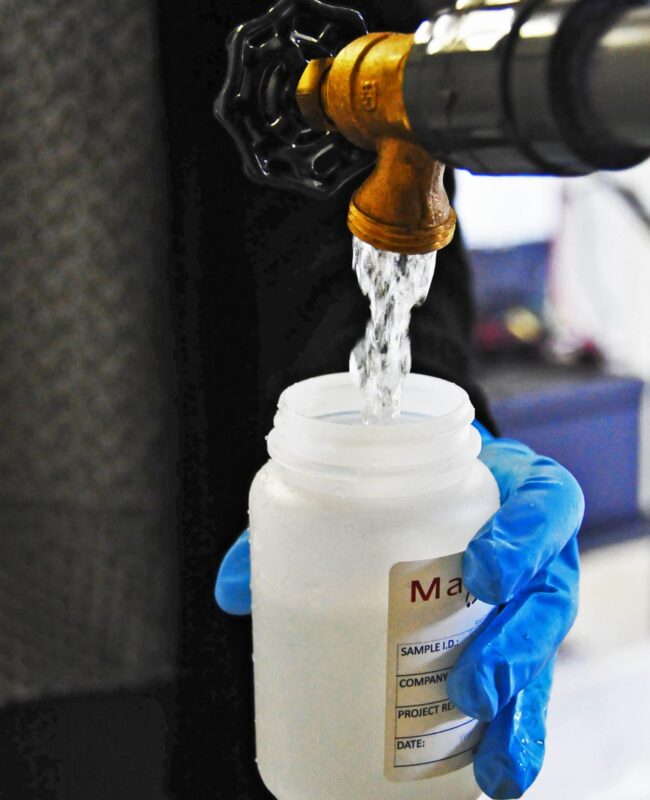Residential Water Treatment System Things To Know Before You Get This
Table of ContentsThe Greatest Guide To Residential Water Treatment SystemThe Basic Principles Of Residential Water Treatment System 6 Simple Techniques For Residential Water Treatment SystemNot known Details About Residential Water Treatment System

on the other hand, originates from manufacturing, commercial and industrial tasks brought and also has a totally different structure than sewage water. Just how does it work? The very first step in this water therapy plant is that the wastewater drains to the plant with the aid of gravity through the primary sewer system.
In this phase, the water relocates through the crushed rock chamber to get rid of any kind of grit. The water then moves to the bar displays which get rid of huge items.
In this stage, the water moves to the key settling tanks, also understood as pre-settling containers. These containers have hoppers which are positioned in the base of the container where water streams via.
The Of Residential Water Treatment System
These clearing up storage tanks enable the sludge to work out and after that relocates to digestion storage tanks. In the food digestion storage tanks, the sludge is warmed as well as blended. One more vital point that takes place below is the production of biogas, which the wastewater therapy plants can recycle, in the production of electrical or thermal energy which is one more substantial advantage to the atmosphere.
The last step in wastewater treatment is inspection. This inspection includes inspecting the contamination level of the water dealt with and seeing to it it abides with the greatest standards in order to be released or recycled for domestic or industrial purposes. residential water treatment system. Applications: A lot of oil refineries or petrochemical as well as chemical markets create a huge amount of wastewater and also need on-site wastewater treatment plants.
The wastewater here streams with displays and into settlement basins that can secure debris in huge quantities. It acts as a pre-treatment as stated above as it occurs before 3 even more aggressive phases- key, second as well as tertiary therapy. Primary Treatment Throughout this stage, the wastewater moves right into the clarifiers.
The Main Principles Of Residential Water Treatment System
It is the layout of these storage tanks that result in working out, that is, the natural strong issue accumulates at the base of the container while the lighter matter drifts to the top coming to be much easier for elimination. The raw material that settles near the bottom is referred to as a main sludge covering.
Secondary Therapy This therapy phase includes cardio aeration. Oygenation containers consist of aerators, these published here have a system of pipes or tubes connected to them. They are made of ceramic or rubber membrane layers that have small openings in them for air to pass through. When this air moves via the aerators, the little holes existing, transform them into bubbles and they get blended with the water column.
This RAS goes back into the main explanation container and the germs in it assists in damaging down any kind of raw material in the sewage. Once RAS has actually entirely gone via both the main and additional information containers constantly, i. e numerous times, it is developed into waste-activated sludge (WAS). The WAS after that does not go back to the key clarification storage tank yet instead transfers to the covered containers, also understood as aerobic sludge digesters.
Lastly, the remaining sludge relocate to the dewatering center that consists of dewatering containers where the plant uses belt presses to press any staying water out of the sludge. Tertiary Therapy Tertiary treatment complies with the procedure of both key as well as additional procedures but likewise additionally includes mechanical and also photochemical procedures.
Little Known Facts About Residential Water Treatment System.
The goal of this is to eliminate as much solid physical matters as feasible before sending the effluent for additional therapy. Here chemicals are included to damage down any kind of solid and also chemical waste.
There are view it 2 kinds of resins- one is an anion one while the various other is a cation one. These previous resins release hydroxyl ions which are adversely billed while the cation resins release hydrogen ions that are positively billed. The cation-exchange resins bring about conditioning of water, the anion-exchange lead to the elimination of nitrate from wastewater and also the mix of both the anion and cation exchange gets rid of essentially every ionic impurity existing in the feed water with a process called deionization (residential water treatment system).
Applications: Demineralization results in the full removal of minerals from the water and also is usually utilized in markets that need water with high levels of pureness, for example- makeup or feed water in high-pressure central heating boilers, the food and also drink sector, as well as procedure streams used in the production of electronics. They are additionally used in markets for the generation of heavy steam, power as well as air conditioning.
Reverse Osmosis (RO) Water Treatment The concept of reverse osmosis (RO) works on the filtering technique that leads to the elimination of a big number of pollutants and impurities from wastewater by using stress to it when it is on one side of a membrane. Exactly how does it function? This water treatment plant functions by using a high-pressure pump that enhances the pressure on the salt side of the RO and forces the water throughout the semipermeable RO membrane (which permits some atoms as well as molecules to pass yet not Clicking Here others), leaving almost 95%-99% of dissolved salts in the turn down stream.